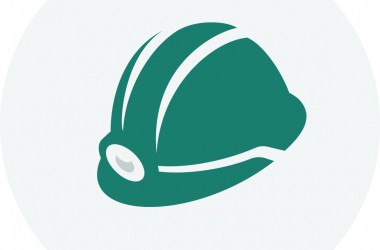- nl
- en
- fr
7 specific things process mining will do for your company
The announcement of new business trends is often frowned upon in our part of the world. Especially in a down-to-earth country like Belgium, hypes are often shunned. At horsum, we are convinced that process mining is thé trend for years to come. Do you need to be worried? Not exactly. What if we told you that process mining is more than just a hype? And that process mining techniques can produce tangible results in the short term?
Process mining is a powerful technique that allows you to optimize your business processes. Based on data recorded in your IT systems you can use process mining to identify areas of improvement and to reinforce your business in very specific areas – whether you are an SME or a large enterprise. There are at least seven things that process mining can do for your business. Here’s an overview.

Figure 1. Process visualization by means of process mining software Disco from Fluxicon
1. Process mining will identify unnecessary and divergent process activities
In practice, business processes are not always running like they have been designed in advance. This can have several causes: some employees prefer to work in their own way, your business environment might have changed, reorganizations might have been implemented, etc.
With process mining, you regain a complete overview and 100% transparency about your business processes, as they are running in reality. This way, deviations from the theoretically optimal business process, inefficiencies and unnecessary process activities will come to light very quickly, which provides an immediate starting point for improvement actions.
2. Process mining will map out bottlenecks
Companies often do not get certain things done on time, despite investments in new IT systems or reorganization of business processes. Unidentified bottlenecks in your business processes can be the cause of this. Based on data coming out of your IT systems, process mining can show you how much time there is between two process steps. This way, you can exactly see where your bottlenecks are.
3. Process mining allows you to benchmark
With process mining, you can simply benchmark business processes between various departments, branches or sales channels. This way, you will learn quickly who is best-in-class and what causes them to be so. Next, you are able to transfer those best practices to less efficient processes.
4. Process mining visualizes interactions between employees
Business processes are usually not adequately optimized from an end-to-end perspective. That's because most companies organize themselves in a functional way. Think of the sales process, from quote to payment. In this process, many departments are involved: the sales department creates the offer, the back-office confirms the order, the warehouse takes care of shipping the goods, the invoicing department takes care of the sales invoice and accounting handles the payment. Each department does its best to get organized in an optimal way. Usually, however, things go wrong during the transfer of information from one department to another.
Process mining allows you to map out end-to-end processes – across all departments – and get an overview of the information transfer between different employees and departments (social mining). Inefficiencies, double work and bottlenecks quickly come to light and you can clearly see where the collaboration between employees goes smoothly and where it is less successful.
5. Process mining identifies the exact cost of process activities
Do you have many hidden costs? Do you charge those costs to your customers? Is the cost calculation of your products and/or services on target? Companies usually have no problems in estimating their direct costs (materials, direct labor ...) and in adequately charging them to their customers. For indirect costs, however, this is more difficult and people often start from assumptions.
Through process mining you are perfectly able to assess how much time your employees spend on certain activities and how many process activities need to be carried out for a certain customer, product or service. With process mining you get a more accurate understanding of your cost structure and you can take actions to become more profitable.
6. Process mining can predict process errors
Process mining provides a picture of your current business processes. But you can also use it to predict future errors (predictive analysis). Unnecessary process activities, bottlenecks and inefficiencies are identified fairly easily. You can find out why something goes wrong and by using data mining techniques you will even be able to predict that something will go wrong. In short: it’s a powerful tool to tackle the cause of your problems.
7. Process mining allows you to follow up on your business processes in real time
You can monitor crucial business processes in real time by linking them to your IT systems. This way, you can continuously follow up on certain core processes, and make quick adjustments when necessary. This enables you to intervene promptly, and you can avoid in a timely manner that things go wrong, at the same time preventing costs resulting from inefficiencies and dissatisfied customers.
A powerful technique for specific results
Process mining is more than a fad. It is a proven technique that allows you to quickly optimize business processes and that produces clear and tangible results. Does any of the above situations sound familiar to you? Then feel free to contact one of our process mining consultants.
Dennis Houthoofd - November 25, 2015

